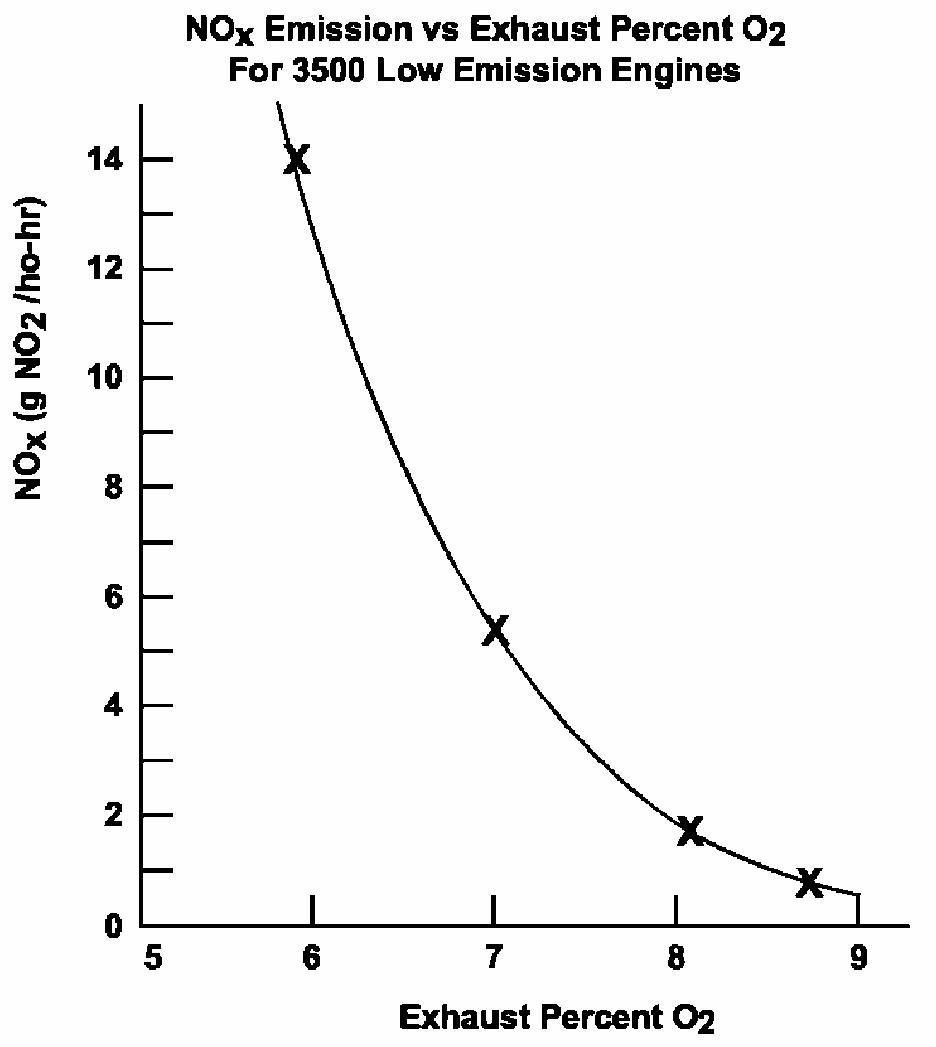
1 minute read
Controlling Air Temperature
The Variation in Air Temperature (VAT) would then become:
V∆T = |-11°C - 11°C)| = 22°C (V∆T = |-20°F - 20°F| = 40°F)
The density of the air would then decrease, resulting in a lower air-fuel ratio of 13.67. The lower air-fuel ratio would result in reducing the percent O2 in the exhaust to 6.5%. The graph in Figure 13 shows how NOx changes as a function of percent O2 in the exhaust. The increased air temperature in our example would increase the NOx emissions to 8.8 g NOx /bhp-hr, which is an increase of 440%.
To maintain a 2.0 g NOx /bhp-hr level, VAT must not exceed 5.5°C (10°F).
Figure 13
High pressure gas engines are not affected by these changes to the same extent as low pressure gas engines. This is because the supply gas temperature remains relatively constant at most installations and the thermostatically controlled aftercooler maintains a fairly constant air temperature to the carburetor. Since these two temperatures are not subject to large changes, the air-fuel ratio remains relatively constant.
There are two primary methods of controlling VAT, controlling the air temperature and using a gas-to-air heat exchanger. Controlling Air Temperature
One method of controlling air supply temperature is to regulate the engine room temperature. However, this approach is not recommended. It is difficult to regulate an engine room to a temperature that is both comfortable to work in and high enough to provide a constant air temperature to the engine. For example, an installation expecting a 32°C (90°F) ambient temperature, will need to regulate the engine room to about 38°C (100°F) at all times. Also, engine rooms having large service doors that, at times, must be left open while the engines are running, will not maintain the airfuel ratio while the doors are open.
The preferred method is to use duct work to supply a temperature regulated air supply to the engine. See Figure 14. This system uses jacket water to heat the air to the temperature set by the thermostat.






